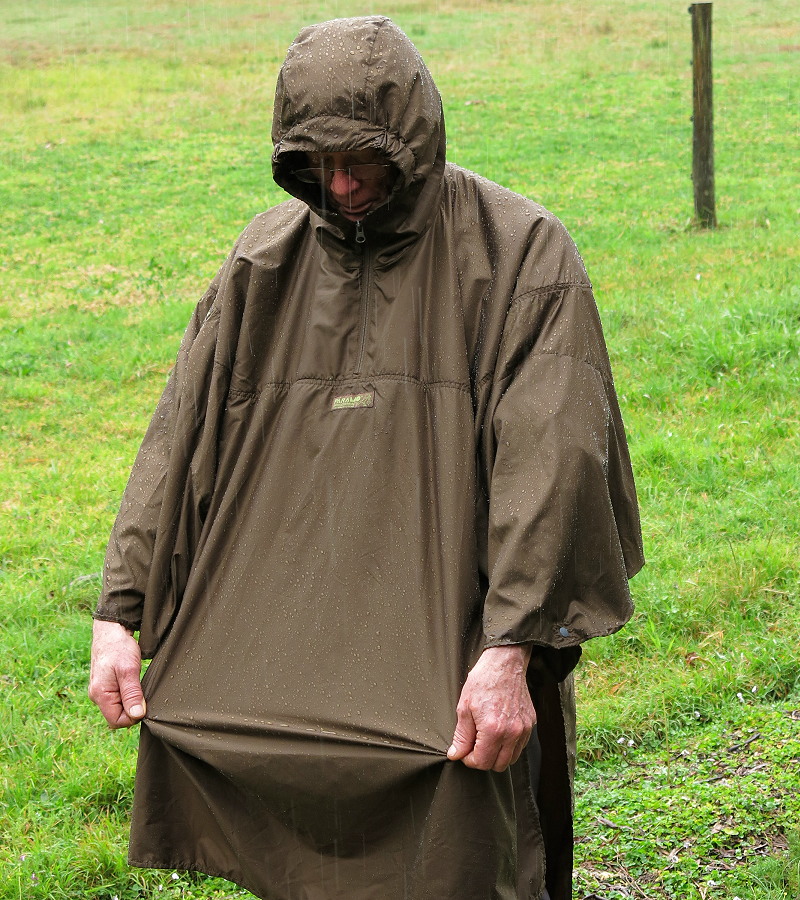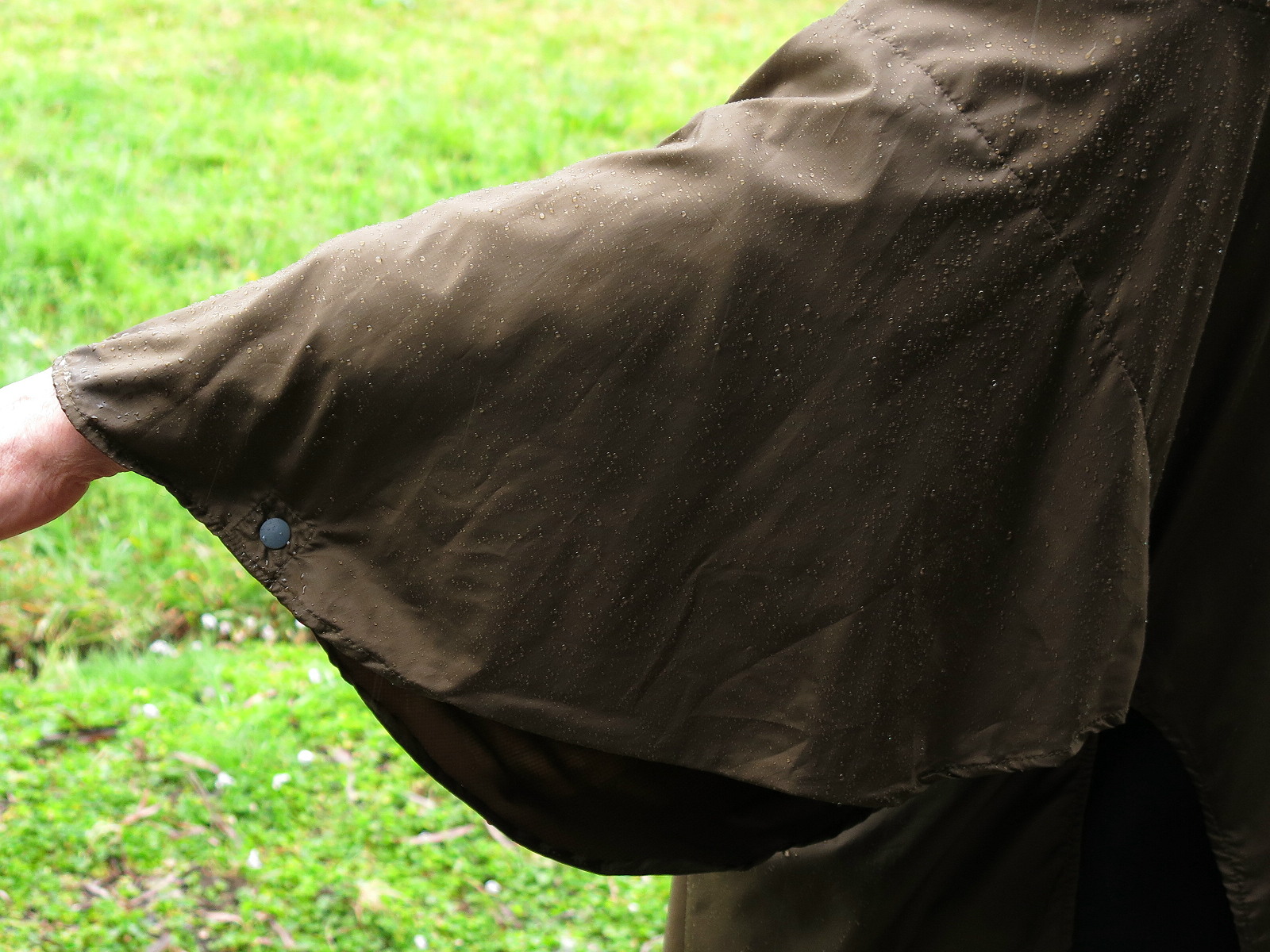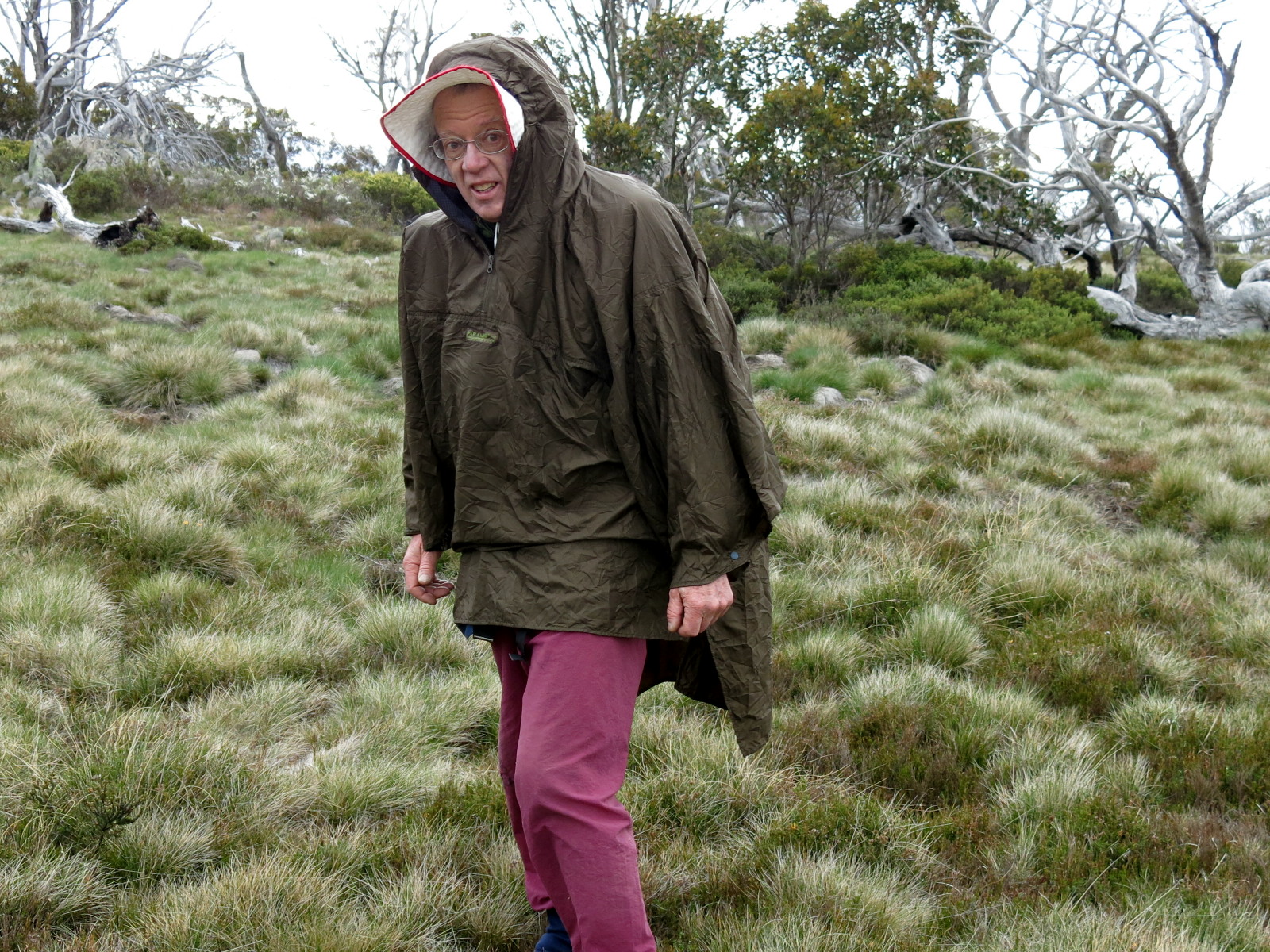Topic
Paramo Poncho and SoftShell Fabrics — Roger Caffin
Forum Posting
A Membership is required to post in the forums. Login or become a member to post in the member forums!
Home › Forums › Gear Forums › Gear (General) › Paramo Poncho and SoftShell Fabrics — Roger Caffin
- This topic has 9 replies, 6 voices, and was last updated 7 years, 3 months ago by
 James Marco.
James Marco.
-
AuthorPosts
-
Oct 30, 2017 at 8:45 am #3499290
Background
I explained about the UK firm Paramo in our review of their Bentu Fleece and Jacket. They design and make clothing suited to the UK weather, which sometimes sees an awful lot of misting rain and light drizzle. If the precipitation is quite light they might even suggest that it is a ‘fine day’. What this means is that they need clothing which will block fine rain and mist and yet not get lots of condensation on the inside. That means ‘breathable’ raingear, as opposed to raingear with a fully waterproof membrane. It’s a novel concept for many, but it can work in the right conditions.

The poncho, £80.00 RRP, Sizes S and L, photo by ParamoThe Poncho
Well, that’s what the poncho looks like, but there are some features you will not find on any other poncho. To be sure, from the shoulders upwards it looks like a jacket rather than a poncho, but look more closely at the hood region shown on the right.Yes, the inside looks textured. What is this?Something known to most walkers who have used membrane rainwear in cold weather is that you get condensation on the inside. And that condensation is cold and it wets out your clothing. That happens despite some industry guarantees to keep you dry. In some circumstances that cold and wet feeling can be downright uncomfortable, and sometimes it can even be dangerous. How do you prevent that from happening?
Well, that’s what this poncho is about. It tackles the whole problem from two directions. First of all, this is not a membrane fabric: there is no barrier to air transmission. That means that water vapour on the inside is going to escape at a huge rate, far greater than any membrane fabric could ever achieve, under real field conditions. Second, the problem of condensation on the inside wetting your clothing and making your skin cold is blocked by a layer of insulation on the inside of the head and shoulders of the poncho. The cold poncho fabric does not contact your skin or your clothing: the insulation layer spaces it off a bit. That’s what that texture visible inside the hood is all about: it’s called a ‘zoned pump liner’. By keeping your skin warm, the liner helps the water vapour inside stay as a vapour longer, and escape from inside the poncho.
Of course, this means the poncho is a bit heavier than a UL silnylon poncho: they claim an average weight of 320 g, which is quite a bit heavier than my MYOG UL silnylon poncho at 190 g. But we have got rather wet and cold inside that silnylon a few times, to the point of shaking or shivering while we were walking.

Rain on the shoulderOf course, it would all be in vain if the poncho leaked. Indeed, if you are proposing to stand around all day in really heavy rain, this poncho might leak a bit. You might be better off with an umbrella or a plastic bag under those conditions. This fabric is water-repellent, but it is not water-proof. Mind you, it seems to be very water-repellent, and Paramo assure me that regular applications of their Nikwax TX-Direct will keep it that way. Nikwax is part of the Paramo stable you see. The TX-Direct is a wax-based DWR treatment.
I found that I did stay dry inside the poncho during limited testing, but if I rubbed some of the wet fabric between my fingers I could get the fabric to wet out and let some water through. That is exactly what I would expect. However, this is a poncho, not a jacket, so my pack goes on the inside and the shoulder straps do not rub on the fabric. Score one for poncho designs in general there. Also, since the pump liner means my shoulders and head are not getting cold and wet from condensation, any water coming through there would be quickly evaporated off because those areas would stay warm.
I should add here that the fabric seems to be some sort of fine micro-fibre weave, and it feels quite soft and nice. Even when wet it did not feel ‘clingy’. But it is also quite strong and did not easily snag on branches.

Rain on the fabricIt was raining, so I stood there holding the poncho out as you can see. A fair bit of water collected on the fabric. Then I shook the fabric, and most of it (nearly all of it) flew away. Granted, the poncho had seen limited use at this stage – we have not had a lot of rain in Sydney (where I live) for the last four months. But with a bit of warmth inside the poncho – and you can get warm inside one if you don’t get wet, I think the fabric should work fairly well. It is a sort of virtuous circle.

The sleeve designParamo have their own take on the whole sleeve design. The underside of the sleeve is held together with a snap at the cuff, and there is another snap at the armpit. There’s a third snap further down the side. Yes, you could open this poncho out, but you would not get a flat tarp out of it. But the design means you do have a lot of flexibility in what you do with your arms. If you sit down with your knees up, there is enough room inside that you can drape the fabric over your knees as well.
You could be conventional and set the sleeves up as shown in the photo. They are not long sleeves, but they are adequate. If you were using this while doing something technical, like scrambling, then this may be the way to go. However, I found that pulling my arms inside the poncho was more effective in most cases – like ordinary walking. Then the ‘sleeves’ flopped down at the sides and I could regulate how warm I got with my arms and the zip at the neck. There was plenty of fabric to let me move my arms around.

The poncho as a windshirtAnd that does bring up an unexpected benefit of the fabric. In the photo here (at about 1,700 m) I am using the poncho more as a windshirt than as rainwear, and my arms are inside the poncho. The wind was howling a bit and we had just had a brief blast of hail. “That stung!” was my wife’s outraged protest. So we put on our ponchos (after the hail), and I found that the fabric is quite an effective wind barrier, but it was not at all sweaty inside the poncho. Somehow, it seemed that the fabric was a better insulator than the silnylon which is what is normally used for a poncho. Perhaps the uncoated surface contacts the skin less than does silnylon.

The poncho covering a packFinally, the back of the poncho is longer than the front when you hang it up. That means that when you put it over a pack, there is enough fabric there that your backside still gets some shelter. Yes, I have a moderate-sized pack on in this photo, but it is well covered.
Oct 30, 2017 at 10:49 am #3499293Interesting….
Oct 30, 2017 at 12:52 pm #3499298Roger,
Have you determined the hydrostatic head of any of the Paramo outer fabrics? I know that Paramo spec their fabric at 2 cfm, but they don’t give a HH figure. Since plain weave fabrics in that air permeability range can hold columns of 900mm or so, I’ve kind of assumed that Paramo face fabrics are around there, but I have no idea if that is so.
Thanks for your reviews. I also have a Bentu, as well as a stand-alone “pump liner” for pairing with UL windshirts. I’ve not used either enough to compare their utility with soft shell systems relying on hydrophilic wicking fabrics (e.g. power dry) for the inner layer, but I’ve long had a suspicion that the hydrphobic liner of Paramo would work better, simply because it is less likely to get waterlogged like power dry will do.
I think Paramo could be vastly more effective in heavy rain if truly waterproof face fabrics were put at the places where rain impacts perpendicular to the fabric – top of head and shoulders, maybe tops of the arms as well. Doing this would probably take the company “off message” but from a DIY modifcation perspective…
Oct 30, 2017 at 8:16 pm #3499361I don’t think that the basic concept of hydrostatic head really can be applied here, at least not in comparison with, say, silnylon. You see, the fabric seems to have a much higher HH when it is dry than when it has been wet though – perhaps by rubbing. In addition, a raw HH is not their goal: they rely on the overall system, so to speak.
A WP shoulder layer – possible of course but you would get condensation there in cold weather. Their approach is almost the reverse, with their pump liner in the head&shoulder region. They use the body heat to keep the top layer working.
Now, an umbrella over the top – that would work wonderfully, until you did a Mary Poppins and flew away in a storm!
Cheers
Nov 1, 2017 at 11:09 pm #3499715The cut interests me. I like the breeziness of a poncho, but having it fitted about the shoulders seems like it might work better in wind.
Nov 2, 2017 at 12:48 am #3499744It did work well in the wind, as you can see from the photos.
Cheers
Nov 2, 2017 at 1:28 am #3499752Are you wearing a Large or a Small in the picture Roger?
The concept is interesting and I have been doing a lot of reading and also thinking back to some of my experiences in Nikwax treated microfibre and fleece combinations above the snow line in wind.
Would it work for an emergency bivouac which is why I still carry my old surplus poncho which has a similar weight
Nov 2, 2017 at 2:02 am #3499762Thank you much for reporting on the Paramo, which I’ve been thinking about for some time. Had thought it was heavier, but 320 grams is not bad considering the longer coverage.
Nov 2, 2017 at 3:51 am #3499778I am normally a Medium. The poncho was a Small in the photo.
It’s the way it breathes and you don’t get icy cold condensation on the inside which I think is so good.
Emergency bivvy? Hum … in light rain, probably. But remember: the Paramo concept relies to some degree on you generating heat inside to help pump out the water vapour.
Cheers
Nov 2, 2017 at 12:29 pm #3499799I believe this is a more formal application and amplification of the phenomenon of walking in a light mist/fog and staying dry, vs, standing still. The heat generated by your body will drive off moisture under these conditions. When amplified by the fabrics and a light DWR, you get a fairly effective rain coat. However, as Roger says, it will rely on your body heat to work.
-
AuthorPosts
- You must be logged in to reply to this topic.
Forum Posting
A Membership is required to post in the forums. Login or become a member to post in the member forums!
HAPPENING RIGHT NOW (February 11-21, 2025) - Shop Hyperlite Mountain Gear's Biggest Sale of the Year:
Our Community Posts are Moderated
Backpacking Light community posts are moderated and here to foster helpful and positive discussions about lightweight backpacking. Please be mindful of our values and boundaries and review our Community Guidelines prior to posting.
Get the Newsletter
Gear Research & Discovery Tools
- Browse our curated Gear Shop
- See the latest Gear Deals and Sales
- Our Recommendations
- Search for Gear on Sale with the Gear Finder
- Used Gear Swap
- Member Gear Reviews and BPL Gear Review Articles
- Browse by Gear Type or Brand.









